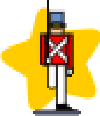Fairy Tales
Fairy tales are not always about fairies, though they are always full of strange and wonderful happenings. Most often fairy tales are about ordinary people – men and women, boys and girls – who somehow get caught up in magical events. Fairies may or may not appear – to help or to hinder! So, why do we call these tales ‘fairy tales’? Why not just ‘wonder tales’, as they were earlier known?
Well, such stories became very popular in France towards the end of the 17th century. Writers such as Mme D’Aulnoy began to put these tales into literary form; Antoine Galland translated and adapted into French The Thousand and One Nights; and Charles Perrault published his famous Histoires ou Contes du Temps Passé, better known as Les Contes de ma Mère l’Oye, or Mother Goose’s Tales, which included ‘The Sleeping Beauty’ and ‘Cinderella’ among others. The French writers coined the term ‘conte de fee’ to describe such stories. This term translates into English as ‘fairy tale’. Hence we call such wonder tales ‘fairy tales’.
Fairy tales, in their traditional form, are not really ‘children’s stories’ as we understand the term today. Nor are they for the fainthearted. Tales such as Charles Perrault’s ‘Blue Beard’, which really is the story of a serial killer, are quite horrifying. The happy endings, while usually there, come after many trials and tribulations, and the world of fairy tales is not always as fluffy and happy as Disney would have us believe. On the contrary, it is stark and brutal, and despite the presence of magic, uncomfortably close to the real world.
Connoisseurs of folk and fairy literature know that a particular tale, or even particular fragments of a tale, may occur again and again across space and time, altered in its details perhaps, but still recognisable. For instance, both in ‘Hansel and Gretel’, as collected by the Brothers Grimm, and Perrault’s Little Thumb, the parents attempt to ‘lose’ their children in the forest, and do so successfully when the breadcrumbs used by the children to lay a trail home are eaten up by the birds. Echoes of the English tale ‘Jack and the Beanstalk’ may be heard in Perrault’s Little Thumb, and of ‘Jack the Giant-Killer’ in his ‘Puss in Boots’. And of course, Perrault’s ‘The Sleeping Beauty’ is really no different from the story of ‘Briar Rose’ by the Brothers Grimm. Such instances, of recurring motifs and common story fragments, are too many to list.
Though the term ‘fairy tale’ is used mainly for European tales, similar fantastical tales existed all over the world. The Sanskrit Kathasaritsagara, composed in the 11th century CE in India, as well as the Arabic The Thousand and One Nights contain innumerable tales of wonder and magic, some of which can be traced back to several thousand years ago.
Here they are then, some of the best-loved fairy tales from around the world.
As you will see, fairies do not appear in all of them, though magic certainly does, as does all manner of human goodness and wickedness.
The Fairy Tales of Charles Perrault
Charles Perrault (1628-1703) was a French poet and writer, and one of the best-loved personalities of 17th century France. He is remembered today for his collection of fairytales published in 1697 under the title Histoires ou Contes du Temps Passé.
The Fairy Tales of the Brothers Grimm
Jacob Ludwig Carl (1785-1863) and his brother Wilhelm Carl (1786-1859) are best known for their collection of more than two hundred fairy and folk tales. The brothers collected the tales from various sources, including friends and neighbours.
The Fairy Tales of Hans Christian Andersen
The fairy tales of Hans Christian Andersen (1805-1875) are unique in that they are the product of his own imagination. Sensitive, delicate, sometimes comical, sometimes melancholy, they touch the heart and leave their mark upon it – of all these tales, perhaps the most moving is that of ‘The Little Mermaid’.
English Fairy Tales, collected by Joseph Jacobs
Joseph Jacobs (1854-1916) was a folklorist and a scholar of Jewish history and culture. Though a prolific writer and literary critic, he is best remembered today for his works on folklore and fairy tales. His collection of English fairy tales include perennials like ‘Goldilocks and the Three Bears’ and ‘Jack and the Beanstalk.’
Tales from The Thousand and One Nights
Often known in English as The Arabian Nights, this collection of stories was compiled in Arabic during the period known as the Islamic Golden Age, which stretched from the 9th to the 14th centuries CE. The tales are drawn from three distinct cultures, Indian, Persian and Arab, and many of them can be traced back to ancient times.
Tales from the Kathasaritsagara
Composed in Sanskrit in Kashmir, the Kathasaritsagara is, for its size, the oldest extant collection of stories in the world. Its name, which means ‘the ocean of the rivers of story’, is no idle boast, for it contains more than three hundred and fifty tales, told across eighteen books in some twenty thousand stanzas. It is one of the most influential non-religious works of Sanskrit literature.








